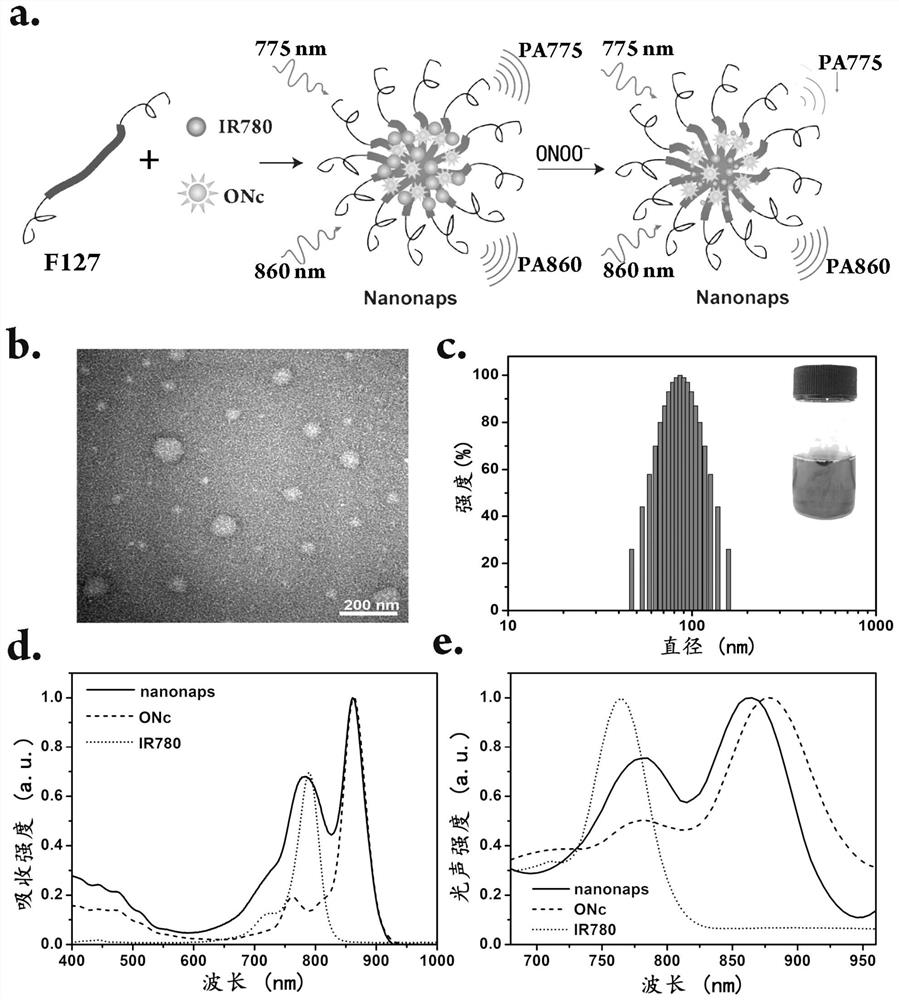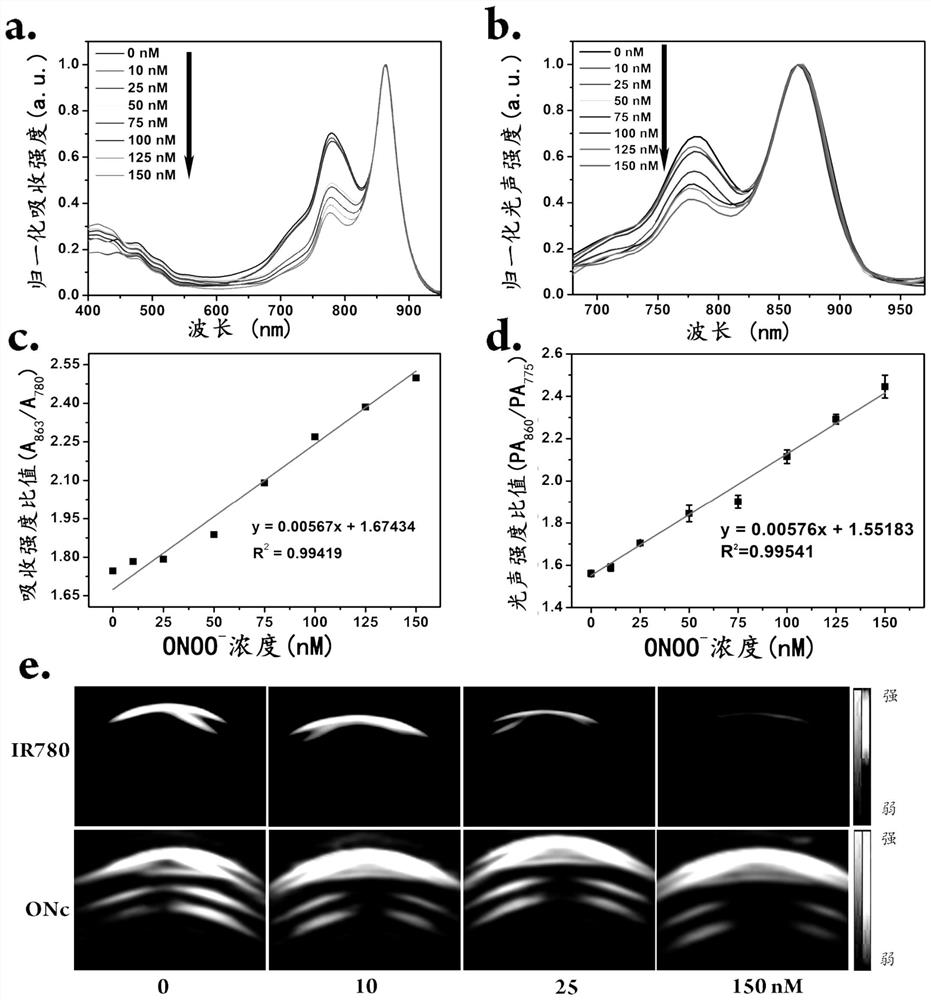A ratio-type nano-photoacoustic detection probe and its preparation method and application
A nano-light and acoustic detection technology, applied in the field of probes, can solve the problems of poor selectivity and low sensitivity of detection technology, and achieve good application prospects and high sensitivity
- Summary
- Abstract
- Description
- Claims
- Application Information
AI Technical Summary
Problems solved by technology
Method used
Image
Examples
Embodiment 1
[0052] Example 1: Synthesis of ratiometric nanophotoacoustic detection probes (nanonaps)
[0053] First, place 10mL of 10% (w / w) F127 in an ice-water bath, add 1mL of ONc and IR780 in dichloromethane dropwise to F127, and continue to stir for about 4 minutes, and then sonicate for 6 minutes; Then put the mixed solution at room temperature and continue to stir for 5 hours to obtain the precursor solution of the ratiometric nano-photoacoustic detection probe; The filter tube was centrifuged at 4°C at 4800xg, once every 30 minutes, washed 4 times with deionized water to remove free F127, and centrifuged until about 200 μL of liquid remained in the filter tube to obtain a ratiometric nano-photoacoustic detection probe.
[0054] The route and mechanism diagram of the synthetic ratiometric nano-photoacoustic detection probe, the corresponding TEM image, the ultraviolet-near infrared absorption and photoacoustic spectrum diagram are as follows: figure 1 shown. figure 1 Middle (a) s...
Embodiment 2
[0055] Example 2: Evaluation of in vitro sensitivity detection of ratiometric nanophotoacoustic detection probes
[0056] Evaluation of ratiometric nanophotoacoustic detection probes for different concentrations of ONOO - the response to. In the UV-NIR absorption detection, prepare 8 groups of the same nanoprobe solution (3 μg / mL ONc), add different concentrations of ONOO - (0-150nM), within 30 minutes, quickly read the absorption spectrum of each group of solutions at 400-1000nm, compare the changes in the absorption ratio (A863 / A780) of different groups at 863nm and 780nm, and use ONOO - Concentration is the abscissa, and A863 / A780 is the ordinate to draw a linear relationship curve between the two; in the process of photoacoustic signal detection, prepare 8 groups of the same nanoprobe solution (25μg / mL ONc), add different concentrations of ONOO - (0-150nM), measure the absorption spectrum of each group solution at 680-970nm within 30 minutes, compare the changes of the ...
Embodiment 3
[0058] Example 3: Evaluation of specific detection of ratiometric nanophotoacoustic detection probes
[0059] Compare the responsiveness of the ratiometric nanophotoacoustic detection probes to different reactive oxygen species (ROS) or reactive nitrogen species (RNS), and evaluate the nanoprobes prepared in this example for ONOO - Specificity of detection. Prepare 11 groups of nanoprobe solutions (3 μg / mL) with the same concentration, the first group is used as the blank control group, and 1 μM ONOO is added to the remaining groups - , 1μM hypochlorite (ClO - ), 50μM hydrogen peroxide (H 2 o 2 ), 50 μM hydroxyl radicals (·OH), 50 μM singlet oxygen molecules ( 1 o 2 ), 50 μM nitric oxide radical (NO ), 50 μM superoxide radical (O 2 · - ), 50 μM of oxidative radicals (ROO ), 50 μM of L-cysteine (Cys) and 50 μM of L-arginine (L-Arg), in order to quickly detect the effect of different groups of nanoprobes on ROS / RNS The responses of each group of solutions were placed i...
PUM
| Property | Measurement | Unit |
|---|---|---|
| diameter | aaaaa | aaaaa |
Abstract
Description
Claims
Application Information
 Login to View More
Login to View More - R&D Engineer
- R&D Manager
- IP Professional
- Industry Leading Data Capabilities
- Powerful AI technology
- Patent DNA Extraction
Browse by: Latest US Patents, China's latest patents, Technical Efficacy Thesaurus, Application Domain, Technology Topic, Popular Technical Reports.
© 2024 PatSnap. All rights reserved.Legal|Privacy policy|Modern Slavery Act Transparency Statement|Sitemap|About US| Contact US: help@patsnap.com










